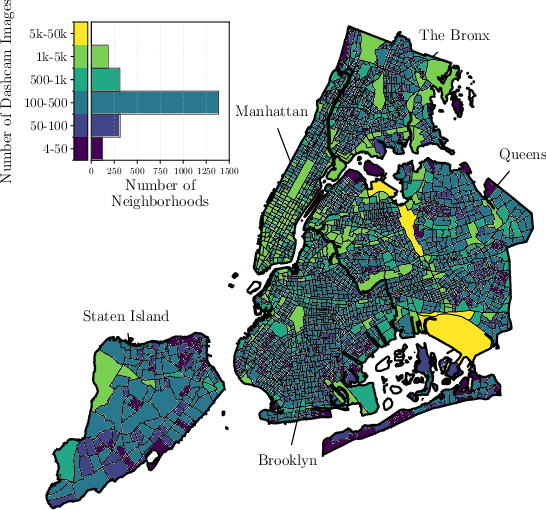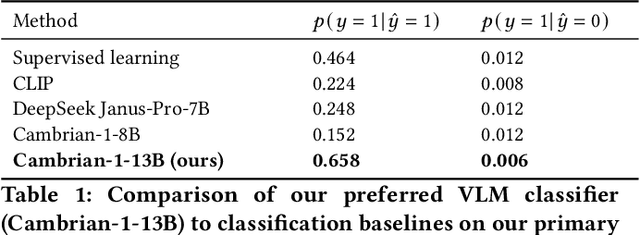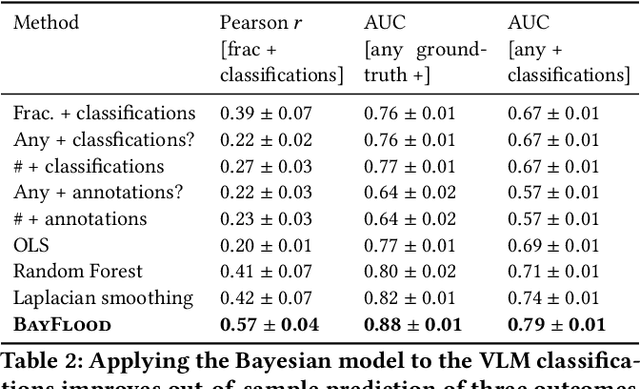Wendy Ju
ERR@HRI 2.0 Challenge: Multimodal Detection of Errors and Failures in Human-Robot Conversations
Jul 17, 2025Abstract:The integration of large language models (LLMs) into conversational robots has made human-robot conversations more dynamic. Yet, LLM-powered conversational robots remain prone to errors, e.g., misunderstanding user intent, prematurely interrupting users, or failing to respond altogether. Detecting and addressing these failures is critical for preventing conversational breakdowns, avoiding task disruptions, and sustaining user trust. To tackle this problem, the ERR@HRI 2.0 Challenge provides a multimodal dataset of LLM-powered conversational robot failures during human-robot conversations and encourages researchers to benchmark machine learning models designed to detect robot failures. The dataset includes 16 hours of dyadic human-robot interactions, incorporating facial, speech, and head movement features. Each interaction is annotated with the presence or absence of robot errors from the system perspective, and perceived user intention to correct for a mismatch between robot behavior and user expectation. Participants are invited to form teams and develop machine learning models that detect these failures using multimodal data. Submissions will be evaluated using various performance metrics, including detection accuracy and false positive rate. This challenge represents another key step toward improving failure detection in human-robot interaction through social signal analysis.
A Constructed Response: Designing and Choreographing Robot Arm Movements in Collaborative Dance Improvisation
May 29, 2025Abstract:Dancers often prototype movements themselves or with each other during improvisation and choreography. How are these interactions altered when physically manipulable technologies are introduced into the creative process? To understand how dancers design and improvise movements while working with instruments capable of non-humanoid movements, we engaged dancers in workshops to co-create movements with a robot arm in one-human-to-one-robot and three-human-to-one-robot settings. We found that dancers produced more fluid movements in one-to-one scenarios, experiencing a stronger sense of connection and presence with the robot as a co-dancer. In three-to-one scenarios, the dancers divided their attention between the human dancers and the robot, resulting in increased perceived use of space and more stop-and-go movements, perceiving the robot as part of the stage background. This work highlights how technologies can drive creativity in movement artists adapting to new ways of working with physical instruments, contributing design insights supporting artistic collaborations with non-humanoid agents.
Privacy of Groups in Dense Street Imagery
May 11, 2025Abstract:Spatially and temporally dense street imagery (DSI) datasets have grown unbounded. In 2024, individual companies possessed around 3 trillion unique images of public streets. DSI data streams are only set to grow as companies like Lyft and Waymo use DSI to train autonomous vehicle algorithms and analyze collisions. Academic researchers leverage DSI to explore novel approaches to urban analysis. Despite good-faith efforts by DSI providers to protect individual privacy through blurring faces and license plates, these measures fail to address broader privacy concerns. In this work, we find that increased data density and advancements in artificial intelligence enable harmful group membership inferences from supposedly anonymized data. We perform a penetration test to demonstrate how easily sensitive group affiliations can be inferred from obfuscated pedestrians in 25,232,608 dashcam images taken in New York City. We develop a typology of identifiable groups within DSI and analyze privacy implications through the lens of contextual integrity. Finally, we discuss actionable recommendations for researchers working with data from DSI providers.
The Robotability Score: Enabling Harmonious Robot Navigation on Urban Streets
Apr 15, 2025Abstract:This paper introduces the Robotability Score ($R$), a novel metric that quantifies the suitability of urban environments for autonomous robot navigation. Through expert interviews and surveys, we identify and weigh key features contributing to R for wheeled robots on urban streets. Our findings reveal that pedestrian density, crowd dynamics and pedestrian flow are the most critical factors, collectively accounting for 28% of the total score. Computing robotability across New York City yields significant variation; the area of highest R is 3.0 times more "robotable" than the area of lowest R. Deployments of a physical robot on high and low robotability areas show the adequacy of the score in anticipating the ease of robot navigation. This new framework for evaluating urban landscapes aims to reduce uncertainty in robot deployment while respecting established mobility patterns and urban planning principles, contributing to the discourse on harmonious human-robot environments.
Making Sense of Robots in Public Spaces: A Study of Trash Barrel Robots
Apr 01, 2025Abstract:In this work, we analyze video data and interviews from a public deployment of two trash barrel robots in a large public space to better understand the sensemaking activities people perform when they encounter robots in public spaces. Based on an analysis of 274 human-robot interactions and interviews with N=65 individuals or groups, we discovered that people were responding not only to the robots or their behavior, but also to the general idea of deploying robots as trashcans, and the larger social implications of that idea. They wanted to understand details about the deployment because having that knowledge would change how they interact with the robot. Based on our data and analysis, we have provided implications for design that may be topics for future human-robot design researchers who are exploring robots for public space deployment. Furthermore, our work offers a practical example of analyzing field data to make sense of robots in public spaces.
Bayesian Modeling of Zero-Shot Classifications for Urban Flood Detection
Mar 18, 2025



Abstract:Street scene datasets, collected from Street View or dashboard cameras, offer a promising means of detecting urban objects and incidents like street flooding. However, a major challenge in using these datasets is their lack of reliable labels: there are myriad types of incidents, many types occur rarely, and ground-truth measures of where incidents occur are lacking. Here, we propose BayFlood, a two-stage approach which circumvents this difficulty. First, we perform zero-shot classification of where incidents occur using a pretrained vision-language model (VLM). Second, we fit a spatial Bayesian model on the VLM classifications. The zero-shot approach avoids the need to annotate large training sets, and the Bayesian model provides frequent desiderata in urban settings - principled measures of uncertainty, smoothing across locations, and incorporation of external data like stormwater accumulation zones. We comprehensively validate this two-stage approach, showing that VLMs provide strong zero-shot signal for floods across multiple cities and time periods, the Bayesian model improves out-of-sample prediction relative to baseline methods, and our inferred flood risk correlates with known external predictors of risk. Having validated our approach, we show it can be used to improve urban flood detection: our analysis reveals 113,738 people who are at high risk of flooding overlooked by current methods, identifies demographic biases in existing methods, and suggests locations for new flood sensors. More broadly, our results showcase how Bayesian modeling of zero-shot LM annotations represents a promising paradigm because it avoids the need to collect large labeled datasets and leverages the power of foundation models while providing the expressiveness and uncertainty quantification of Bayesian models.
ReStory: VLM-augmentation of Social Human-Robot Interaction Datasets
Dec 30, 2024
Abstract:Internet-scaled datasets are a luxury for human-robot interaction (HRI) researchers, as collecting natural interaction data in the wild is time-consuming and logistically challenging. The problem is exacerbated by robots' different form factors and interaction modalities. Inspired by recent work on ethnomethodological and conversation analysis (EMCA) in the domain of HRI, we propose ReStory, a method that has the potential to augment existing in-the-wild human-robot interaction datasets leveraging Vision Language Models. While still requiring human supervision, ReStory is capable of synthesizing human-interpretable interaction scenarios in the form of storyboards. We hope our proposed approach provides HRI researchers and interaction designers with a new angle to utilizing their valuable and scarce data.
ERR@HRI 2024 Challenge: Multimodal Detection of Errors and Failures in Human-Robot Interactions
Jul 08, 2024Abstract:Despite the recent advancements in robotics and machine learning (ML), the deployment of autonomous robots in our everyday lives is still an open challenge. This is due to multiple reasons among which are their frequent mistakes, such as interrupting people or having delayed responses, as well as their limited ability to understand human speech, i.e., failure in tasks like transcribing speech to text. These mistakes may disrupt interactions and negatively influence human perception of these robots. To address this problem, robots need to have the ability to detect human-robot interaction (HRI) failures. The ERR@HRI 2024 challenge tackles this by offering a benchmark multimodal dataset of robot failures during human-robot interactions (HRI), encouraging researchers to develop and benchmark multimodal machine learning models to detect these failures. We created a dataset featuring multimodal non-verbal interaction data, including facial, speech, and pose features from video clips of interactions with a robotic coach, annotated with labels indicating the presence or absence of robot mistakes, user awkwardness, and interaction ruptures, allowing for the training and evaluation of predictive models. Challenge participants have been invited to submit their multimodal ML models for detection of robot errors and to be evaluated against various performance metrics such as accuracy, precision, recall, F1 score, with and without a margin of error reflecting the time-sensitivity of these metrics. The results of this challenge will help the research field in better understanding the robot failures in human-robot interactions and designing autonomous robots that can mitigate their own errors after successfully detecting them.
Field Notes on Deploying Research Robots in Public Spaces
Apr 29, 2024Abstract:Human-robot interaction requires to be studied in the wild. In the summers of 2022 and 2023, we deployed two trash barrel service robots through the wizard-of-oz protocol in public spaces to study human-robot interactions in urban settings. We deployed the robots at two different public plazas in downtown Manhattan and Brooklyn for a collective of 20 hours of field time. To date, relatively few long-term human-robot interaction studies have been conducted in shared public spaces. To support researchers aiming to fill this gap, we would like to share some of our insights and learned lessons that would benefit both researchers and practitioners on how to deploy robots in public spaces. We share best practices and lessons learned with the HRI research community to encourage more in-the-wild research of robots in public spaces and call for the community to share their lessons learned to a GitHub repository.
SSUP-HRI: Social Signaling in Urban Public Human-Robot Interaction dataset
Mar 16, 2024Abstract:This paper introduces our dataset featuring human-robot interactions (HRI) in urban public environments. This dataset is rich with social signals that we believe can be modeled to help understand naturalistic human-robot interaction. Our dataset currently comprises approximately 15 hours of video footage recorded from the robots' perspectives, within which we annotated a total of 274 observable interactions featuring a wide range of naturalistic human-robot interactions. The data was collected by two mobile trash barrel robots deployed in Astor Place, New York City, over the course of a week. We invite the HRI community to access and utilize our dataset. To the best of our knowledge, this is the first dataset showcasing robot deployments in a complete public, non-controlled setting involving urban residents.
 Add to Chrome
Add to Chrome Add to Firefox
Add to Firefox Add to Edge
Add to Edge